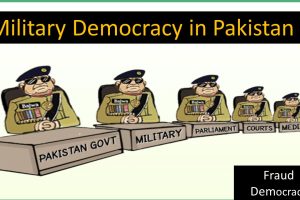Peace and Security Funding Index tracks more than $280 Million in Foundation and Philanthropic Grantmaking
Washington, DC (US) – Peace and security funders are making important contributions to global peace and stability, despite making up a very small percentage of total foundation giving, says a new research project by the Peace and Security Funders Group (PSFG), in conjunction with Foundation Center.
The Peace and Security Funding Index: An Analysis of Global Foundation Grantmaking also highlights the diversity of the funders and strategies behind this often-overlooked, yet critical, work.
“PSFG undertook this project to better understand who is active in peace and security funding and how that funding is being utilized,” said Alexandra I. Toma, Executive Director of the Peace and Security Funders Group.
“What we found is truly encouraging: While making up less than one percent of global philanthropic giving, peace and security funders are punching well above their weight. This is important as more funders join us because they can make impactful grants at nearly any level.”
The Funding Index is a first-of-its-kind research project that showcases the foundations and philanthropists dedicated to building a safer, more peaceful, and increasingly prosperous global future. Peace and security funders such as the Howard G. Buffet Foundation, Joseph Rowntree Charitable Trust, Oak Foundation, and GHR Foundation are investing in efforts to prevent, mitigate, and resolve conflict, as well as to rebuild after conflicts end.
From research on stopping nuclear terrorism to citizen journalism in Egypt, peace and security funders support the work of peace, justice, diplomacy, and both national and global security in a variety of ways. In 2013, the most recent year of data that is available, researchers identified 288 foundations supporting over 1,200 organizations with more than $283 million spread across nearly 2,000 grants.
“Peace and security is a nuanced field, with funders pursuing a variety of goals through a host of strategies at every level of engagement — from the grassroots to the global policy level. The best way for peace and security funders to ensure that this full range of giving is accurately represented in the Funding Index is by sharing more detailed grant information directly with Foundation Center, as well as on IRS tax forms,” added Larry McGill, Vice President of Knowledge Services at Foundation Center.
The Funding Index finds that foundations engage in peace and security funding at every level of giving. While the top 15 peace and security funders provided two-thirds (67 percent) of the $283 million awarded in 2013, the vast majority of foundations engaged at far more modest levels. In fact, 70 percent of funders had combined peace and security giving of less than $250,000; well over one-third (37 percent) gave less than $50,000. Across this set of funders, there are numerous models of engagement for foundations of any size looking to become active in the peace and security field.
The majority of funding in the space employs policy work and research as a strategy. Peace and security funders are almost twice as likely as other grantmakers to fund policy and advocacy strategies, suggesting that peace and security funders believe being engaged with the policymaking process is a critical aspect of being effective in this area. Another funding priority uncovered in the study is amassing the knowledge needed to better understand how conflict happens in order to end it. Overall, one in five peace and security grant dollars (20 percent) awarded in 2013 funded research.
One area of opportunity for potential funders is conflict prevention efforts, which comprised just six percent of peace and security funding. Among available grants data, researchers identified $6 million in grants for conflict prevention and only $300,000 on early warning mechanisms. Another surprise discovery is funding for cyber-security measures, which received only one grant totaling $200,000 in 2013.
“Knowing where foundation dollars are going is the first step in making sure they’re well spent,” said Eli Sugarman, Program Officer for the Hewlett Foundation’s Cyber Initiative. “As we consider what investments we need to counter the threats facing us in the twenty-first century — including cyber-security — this new data shows how our funding can best serve the public interest.”
Hillary Wiesner, Director of the Transnational Movements and the Arab Region program at Carnegie Corporation said: “With complex global trends like the proliferation of militant groups and decline in state functionality, we are increasingly turning to experts in the conflict-affected regions to illuminate the drivers of violence and diverse methods of peacebuilding. This report highlights creative actions ranging from legal norms to local solutions, such as empowering women working to avert conflict and mass atrocities.”
The Funding Index shines a spotlight on several specific and successful grant strategies. For example, starting in 2010, several PSFG members — Carnegie Corporation of New York, Rockefeller Brothers Fund, and Ploughshares Fund — joined together to support an array of advocacy projects, scientific research, and Track II diplomacy that proved to be vital in making the Iran nuclear agreement possible.
Joe Cirincione, President of Ploughshares Fund said: “The Peace and Security Funding Index is an extraordinary resource. To make smart grants, you must first understand the funding landscape. The comprehensive data collected and analyzed in the Index will help Ploughshares Fund and our sister foundations hone our strategies, reduce redundancies and better sync our efforts. It couldn’t come at a more crucial moment.”
Bruce Lowry, Interim President and Director, Policy and Advocacy at the Skoll Global Threats Fund said: “The Peace and Security Funders Group has proven a strong vehicle for those philanthropies working on nuclear nonproliferation issues to share interests, concerns and best practices, including, over the last few years, collaborative work in support of the Iran nuclear deal.”
Toma concluded: “By working with foundations to improve our data set, we hope that future iterations of the Index will provide a more nuanced, complete picture of the peace and security funding landscape. We also hope that the Index encourages other funders to join us in working towards creating tangible, lasting, positive change for people and communities around the world.”
The William and Flora Hewlett Foundation has generously supported The Peace and Security Funding Index: An Analysis of Global Foundation Grantmaking.
The full report and the interactive website can be accessed for free at Peace and Security Index.





